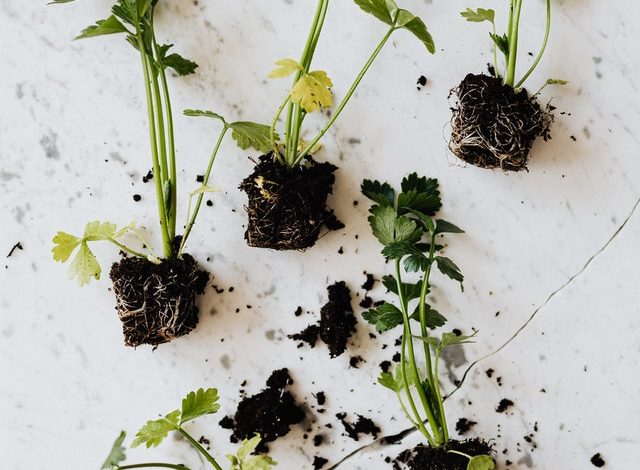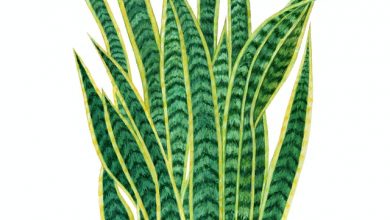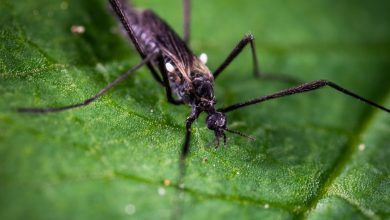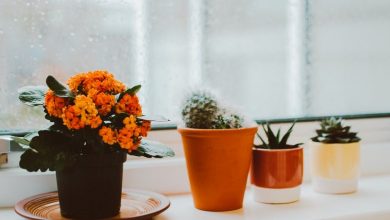How to Fix Root Rot

There are two words that no gardener wants to hear – root rot. When it occurs, root rot can be a very serious condition that can kill plants if it’s not treated immediately and correctly.
As a home gardener, it’s crucial that you’re able to identify when your plants are experiencing root rot and know what to do to treat it. In this article, we’ll explore the ins and outs of this damaging plant condition and give you critical methods for treating and preventing it.
What Is Root Rot?
Root rot is a disease that can occur in plants stemming from various reasons. Below are some of the common factors that can cause root rot in both indoor and outdoor plants:
- Poor Drainage – When a plant’s soil isn’t able to effectively drain and disperse water, it can become waterlogged. Essentially, waterlogging causes the soil to hold too much moisture, which can lead to the introduction of fungal growth. When fungus grows in a plant’s soil, it can lead to disease and root rot.
- Overwatering – Overwatering by gardeners or through outside sources like rain can lead to soil conditions being too moist, similar to when the soil has poor drainage. When the soil conditions are regularly too wet, fungus can then grow and cause root rot.
- Weak Root Systems – When the root systems of a plant are broken or too weak, root rot can occur when the plant isn’t strong enough to withstand local fungal growth present in the soil.
How to Correctly Identify Root Rot
When root rot occurs, it can present itself in many different ways. Knowing how to quickly and accurately identify root rot when it first occurs is crucial. Root rot is notoriously tricky to locate because the problem is growing underground where the root system is. Fortunately, there are various indicators that can help you identify the issue before it’s (hopefully) not too late. Below are the signs and symptoms of root rot to look out for:
- Poor Growth – When you notice weak growth in your plants that is otherwise unexplained, it could be root rot. This effect occurs because the root system is compromised and unable to contribute proper nutrients to the plant to sustain growth.
- Quick Decline – Signals of growth decline can often be indicators that a disease is present in a plant. For instance, if you have a food crop that is growing well in your outdoor garden, and it begins to decline suddenly, it could be due to root rot.
- Dead Branches – Dead branches that are not related to seasonal change or standard branch death might indicate the presence of root rot in your plant.
- Sunken Bark or Base – When fungus grows into the plant, it can sometimes infect and decay the bark or stem, which can lead to sunken areas being present.
- Pale Leaves – Underdeveloped or under-colored leaves may indicate a nutritional deficiency that the plant is experiencing due to root rot.
- Wilted Leaves – Wilted leaves are another big warning sign of root rot. Leaves can prematurely wilt when fungal growth in a plant’s roots is causing nutritional deficiencies.
- Canopy Reduction – In trees, if you see where canopy growth is less or thinning, it can indicate root rot or other diseases being present.

How to Effectively Treat Root Rot
The approach you take with treatment once root rot is discovered can make all the difference in your plants’ survival chances. However, it’s also important to identify if a plant is able to be saved first before implementing any treatment processes. To determine the plant’s current health condition in question, you’ll need to take a look at the root system. If the plant’s roots are extraordinarily mushy and wet, it is most likely the case that the plant isn’t salvageable. However, if the roots of the plant still appear to have firm and white portions, most likely, there is a chance you can save it.
The steps below can help you treat root rot effectively:
- Remove the plant from the soil with its roots intact. Following removal, run the roots under a gentle stream of water to remove all dead roots, fungus, and any loose dirt.
- After cleaning the roots thoroughly and removing the dead portions, cut off all roots that were on the same level as the dead area with a pair of sharp scissors. You should be left only with an even layer of healthy roots.
- Replant your plant in a fresh mixture of soil and water with a healthy dose of water while being careful not to water too much. Usually, you’ll want to water up to two inches deep in the soil. If your plant was in a pot or a planter, it’s vital that you change the soil entirely and sanitize the area thoroughly.
- Repeat this process for any other plants in the area experiencing similar symptoms. Be sure to sanitize your scissors and any tools used following the treatment process to prevent further infection spread with other plants in your garden. Rubbing alcohol can be an excellent sanitizer for your shears or scissors.

How to Prevent Future Root Rot
Prevention is key with root rot. Because root rot is silent, often unseen, and moves quickly, it can kill garden crops and plants often quicker than gardeners can even identify the problem and attempt to treat it.
Here are some steps and tips to help you prevent root rot from occurring in the first place:
- Consider Your Soil – The soil you use plays a large part in how well moisture surrounding your plant is drained and dispersed. For most planting scenarios, looser dirt that contains a mixture of sand, perlite, and dirt can be ideal. You will most likely want to avoid lay-based soils because they can hold moisture in place too much.
- Improve Your Drainage – If you feel you’re watering accurately and climate conditions haven’t been too wet, it could be that your yard is not structured to drain well. You can address drainage improvement in a number of ways, including through soil changes, by building raised planting beds, or by implementing French drains to redirect and drain groundwater.
- Change Your Watering Habits – While not intentional, a common problem experienced by home gardeners is overwatering. It’s important to become familiar with how to best water the plants in your garden to prevent root rot and sustain healthy growth. If you’re looking for watering guidance, we have an excellent guide to help here. In the guide, you’ll find that watering efforts for gardens can be very nuanced in order to promote proper growth.
- Focus on Root Strength – When plants have robust root systems, it can go a long way towards preventing root rot and various other problems. When a plant has healthy roots, it ensures that the plant’s optimal amount of nutrients can be absorbed. Healthy roots are also better able to block always-present microbes, fungi, and phytopathogens in the soil that can make plants very sick. If you’re looking for ways to increase your plants’ root strength, focus on increasing the amount of nutrients present and how often and well you are fertilizing the soil.
- Plant According to Conditions – Sometimes, preventing root rot and other diseases boil down to merely ensuring that the right plants for your climate and area are being planted. If you’re in an area that tends to have wetter conditions, for instance, try establishing plants that can grow well around a lot of water. There are also certain plants that are more susceptible to root rot, such as Andromeda, rhododendron, heather, laurel, and English lavender.
- Keep the Soil Fresh – Just because you’re dealing with dirt, doesn’t mean that things shouldn’t be kept clean. Between planting, or throughout the year, make it a point to establish fresh dirt for new plants and continued growth.
- Use a Moisture Meter – As mentioned earlier, it’s imperative that soil is kept moist but not oversaturated. By using a tool, such as a moisture meter, regularly to gauge soil moisture conditions, you can better prevent the conditions that promote fungal growth from occurring.
- Aerate the Soil – Oxygen is vital to ensuring soil conditions are ideal for your garden. Be sure to aerate your lawn on a regular basis using a plug or spike aerator. By doing this, you can ensure that the right amount of oxygen is able to filter through your soil to offset overly moist conditions.
- Don’t Restrict Your Plants Too Much – If you’re growing plants indoors, it’s important that they have space and room to grow correctly; don’t grow your plants in pots or containers that are too small for their roots. By using larger planters, the soil has more room to allow for moisture dispersal, and the roots have room to grow. You’ll also want to make sure that you don’t establish your plants too close together for the same reasons.



